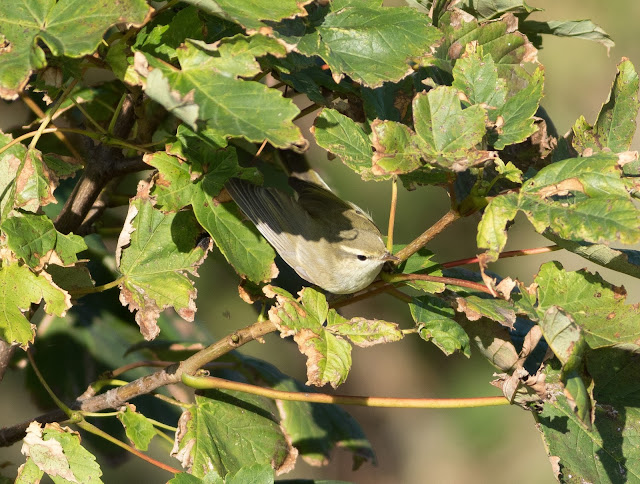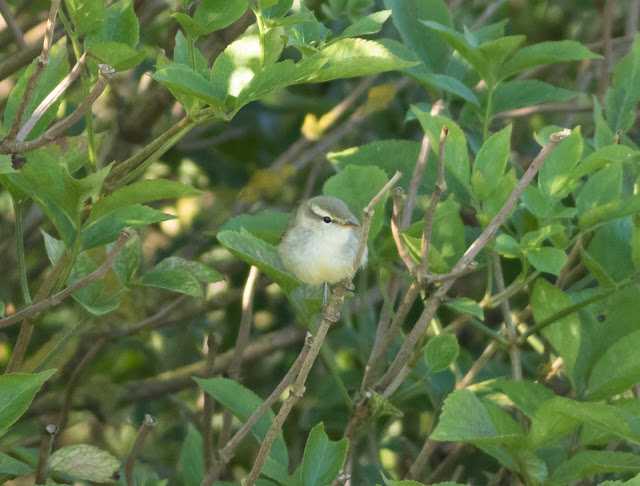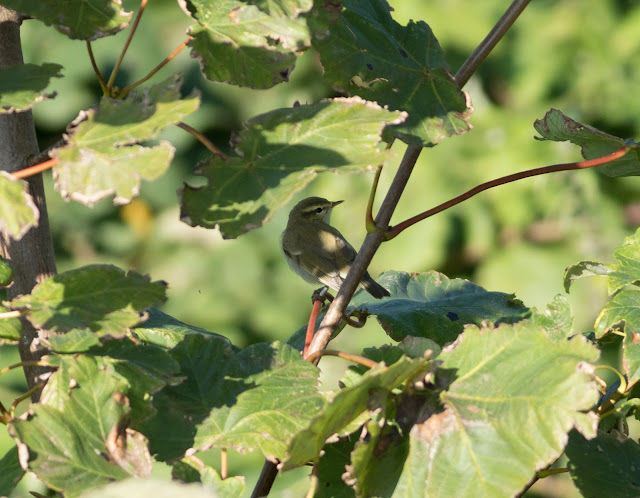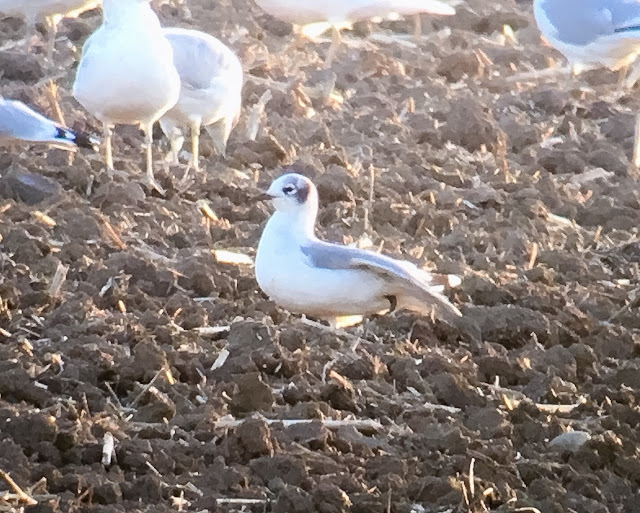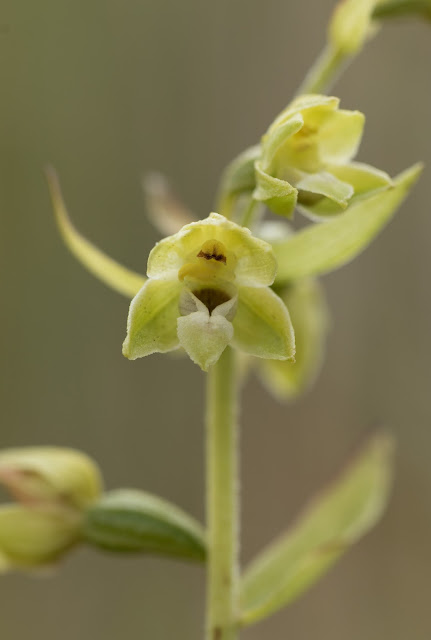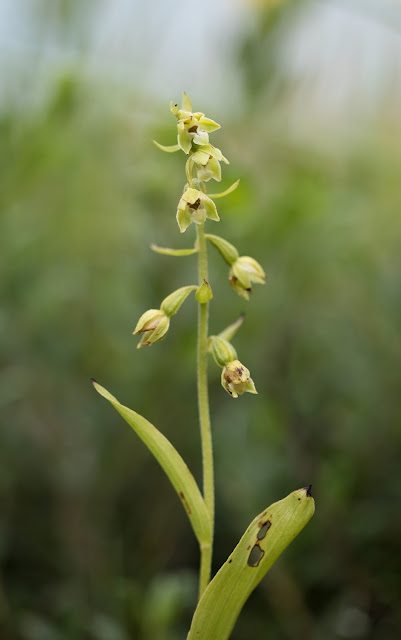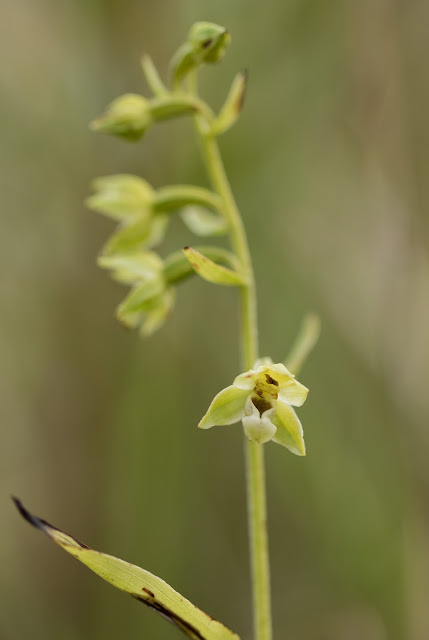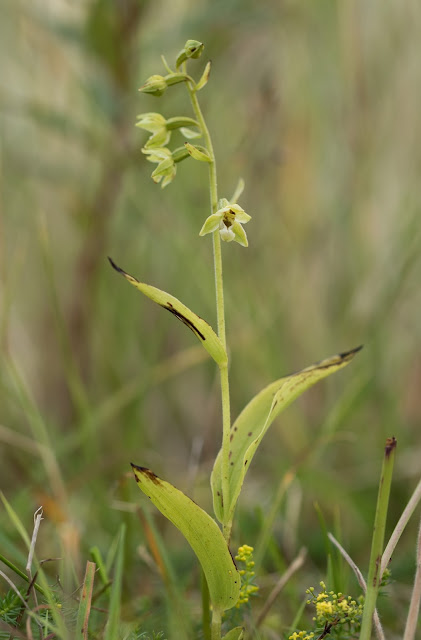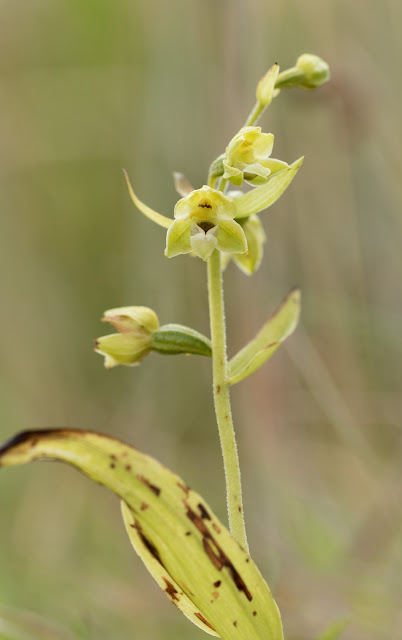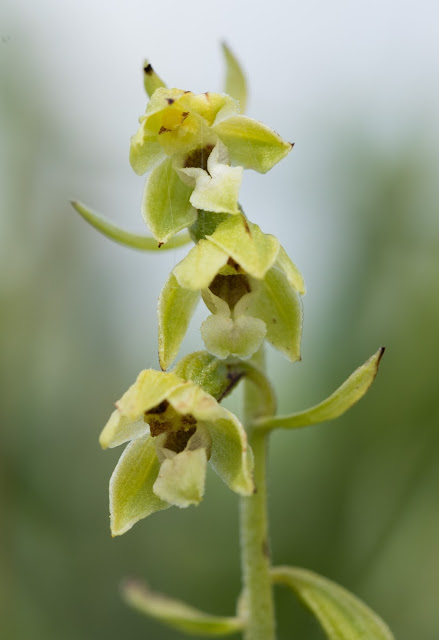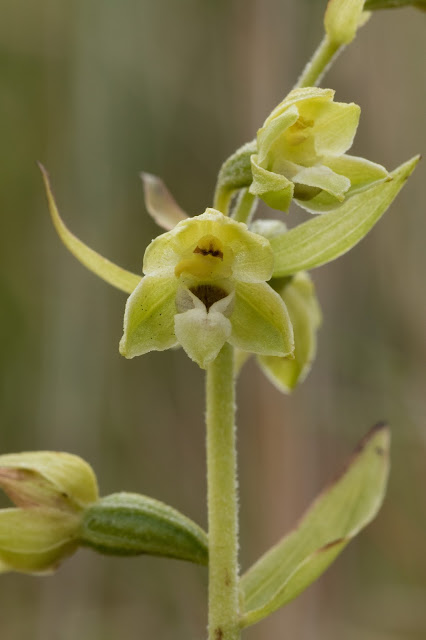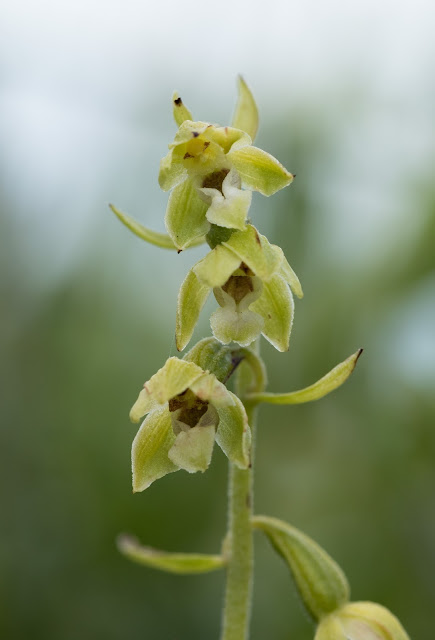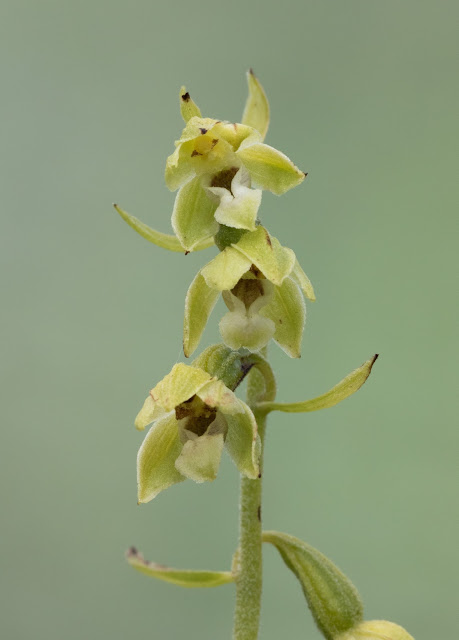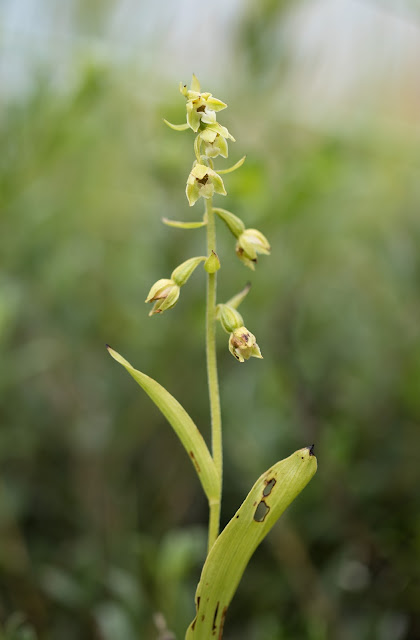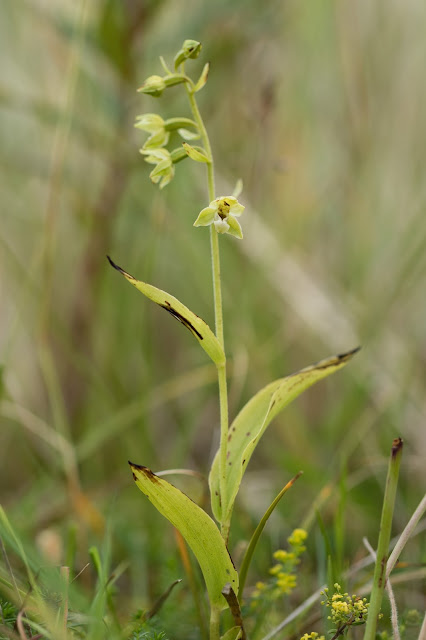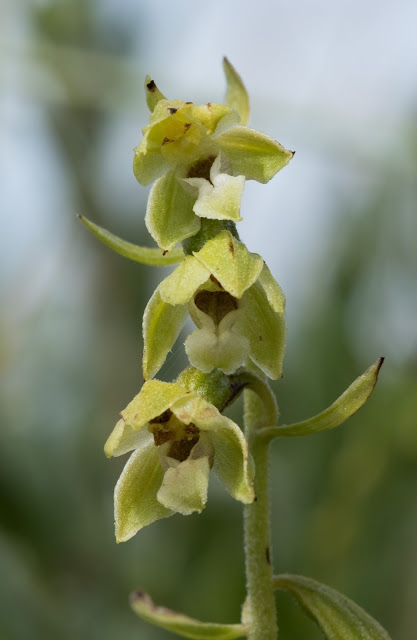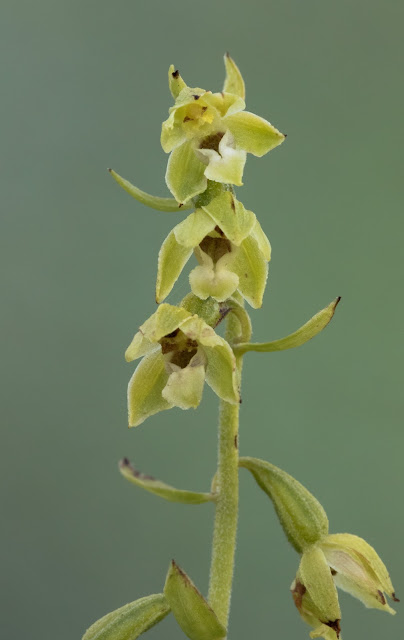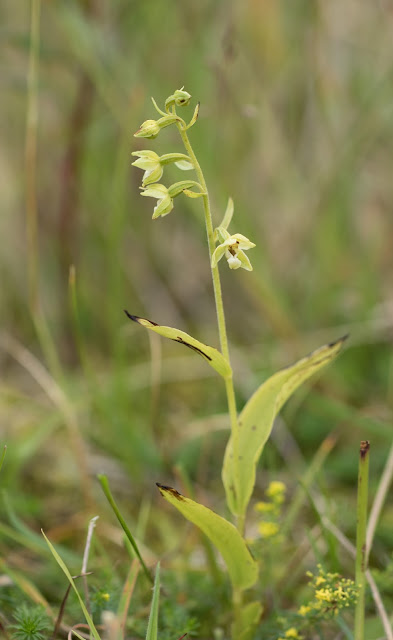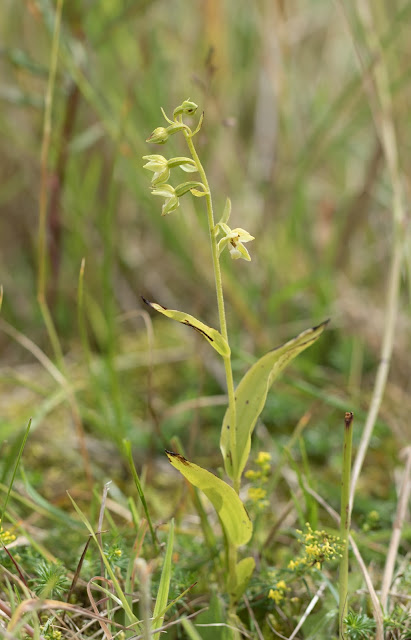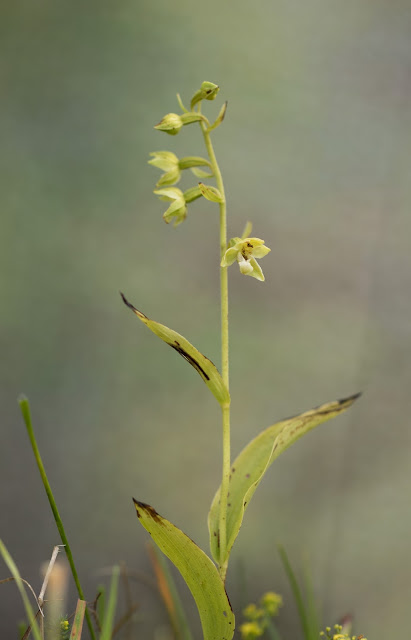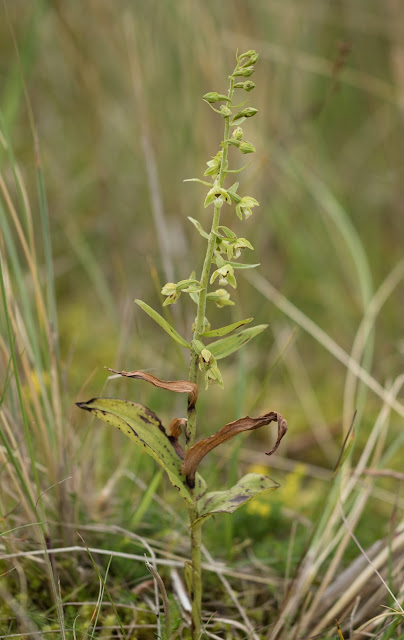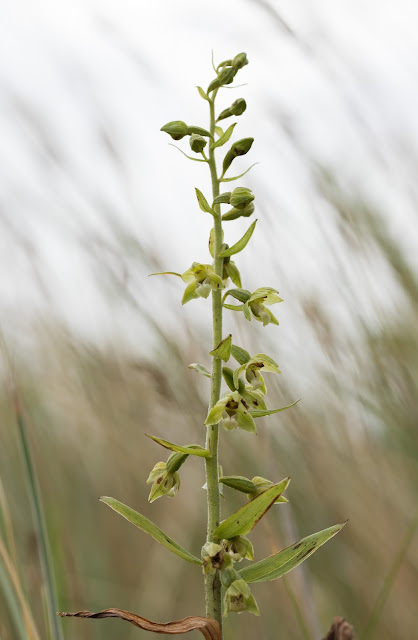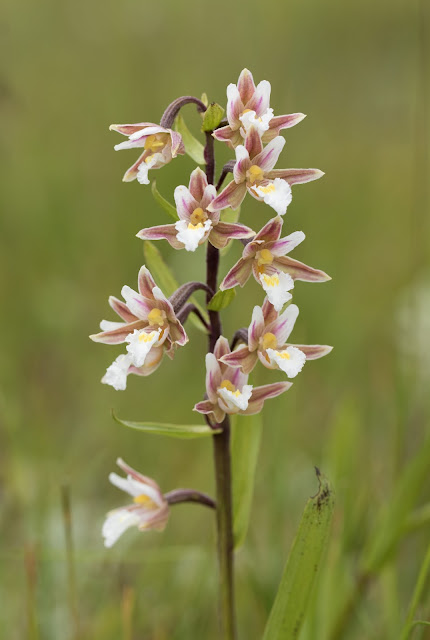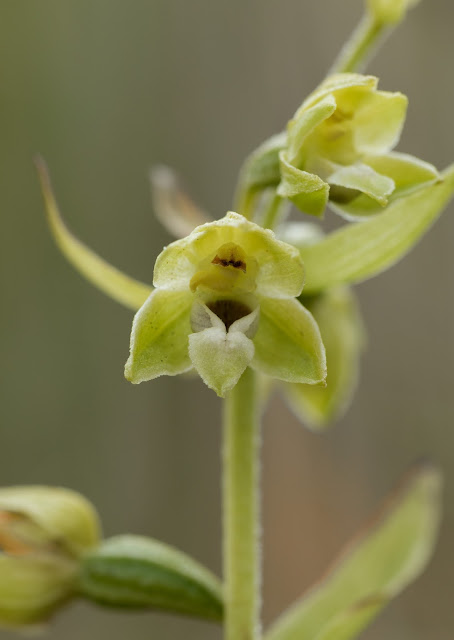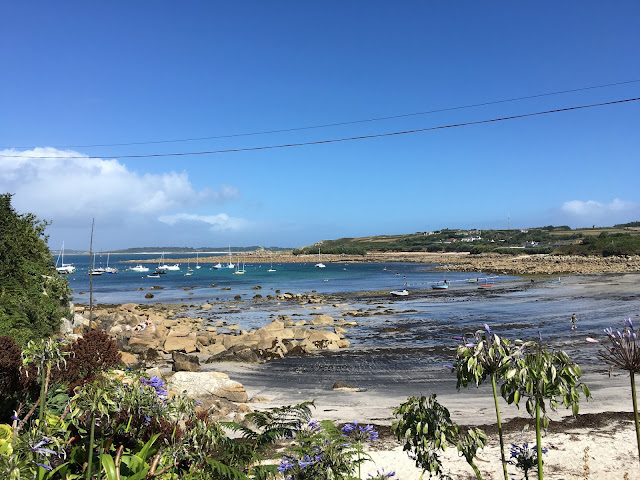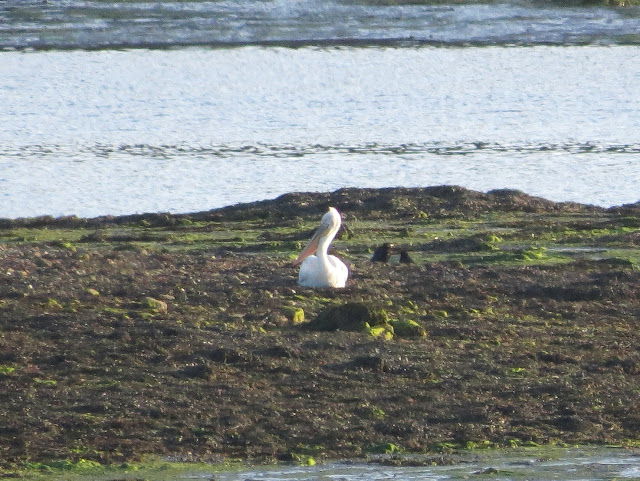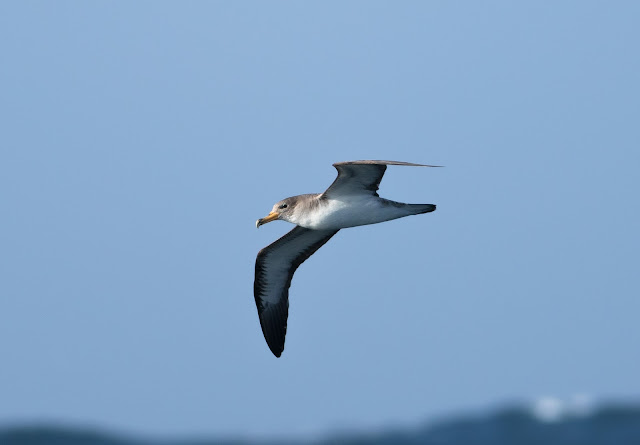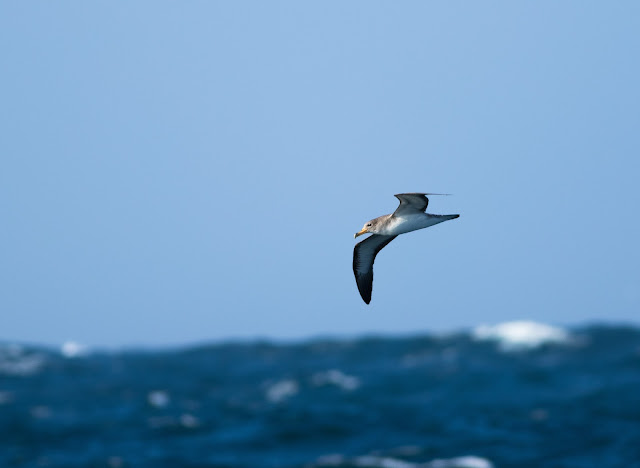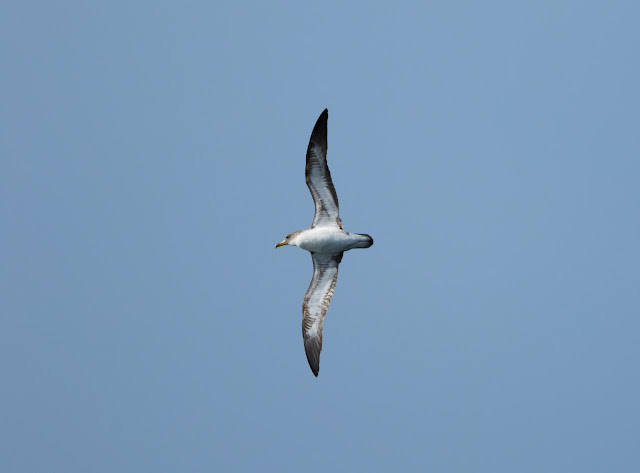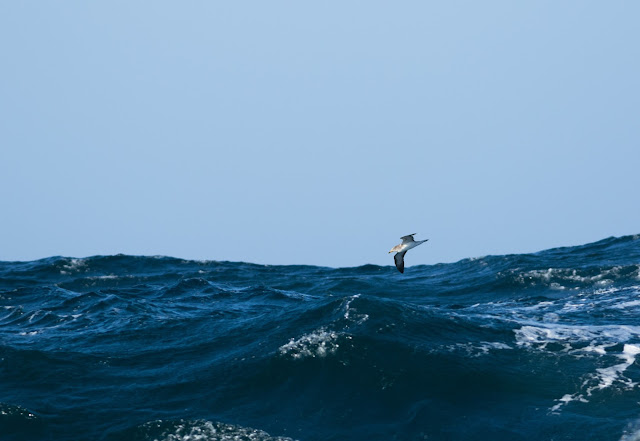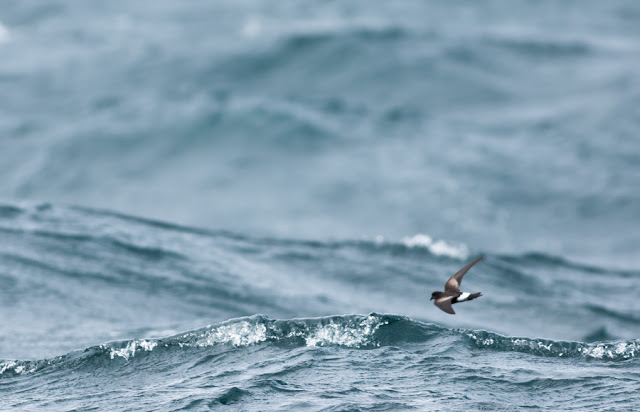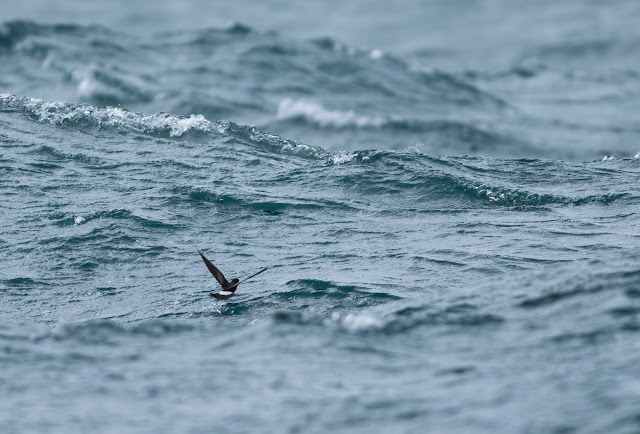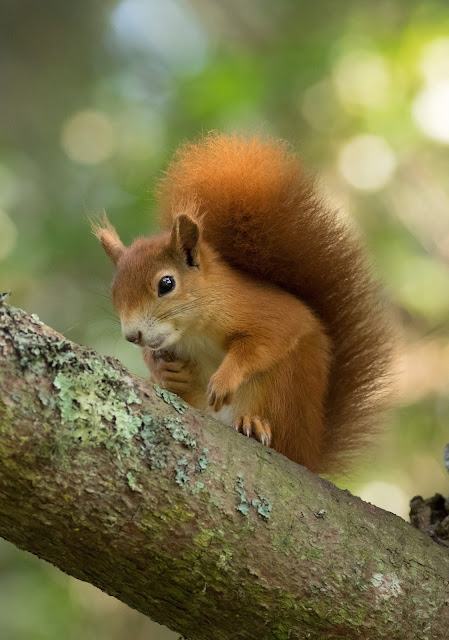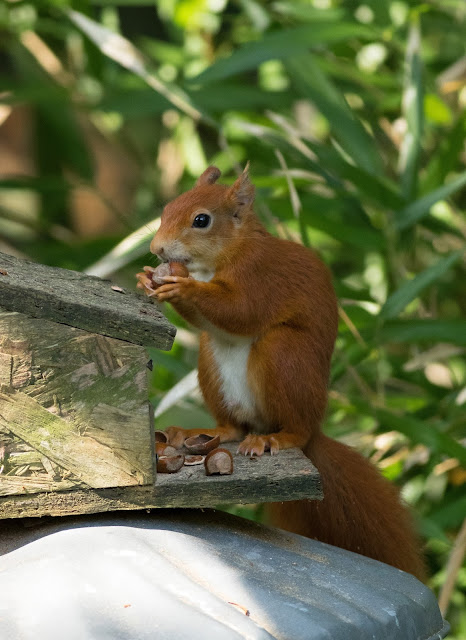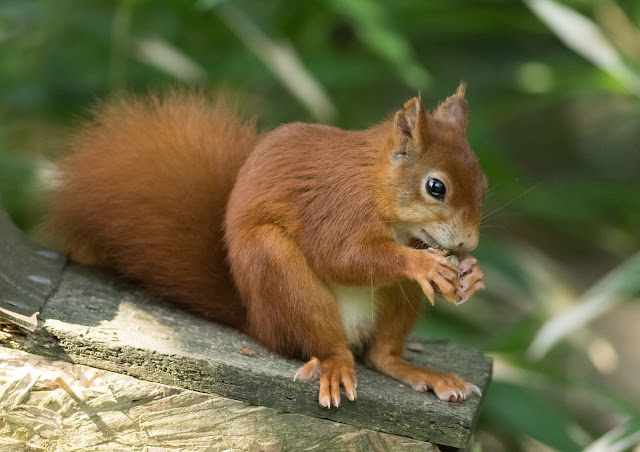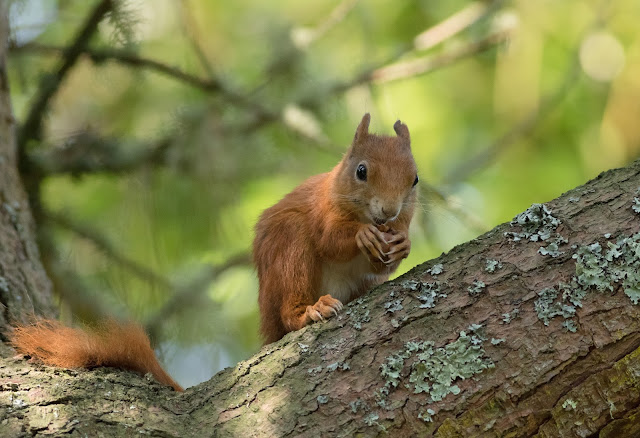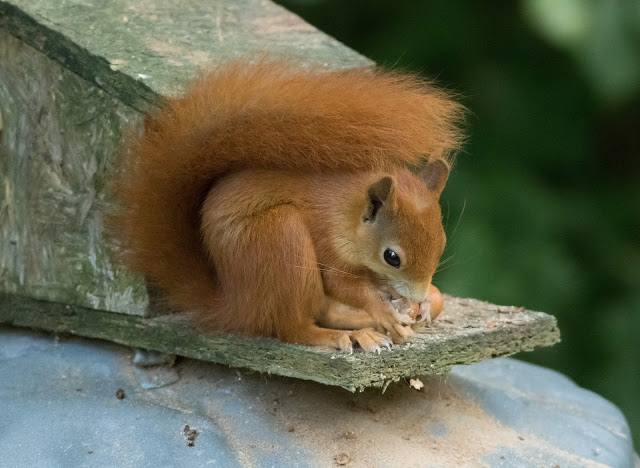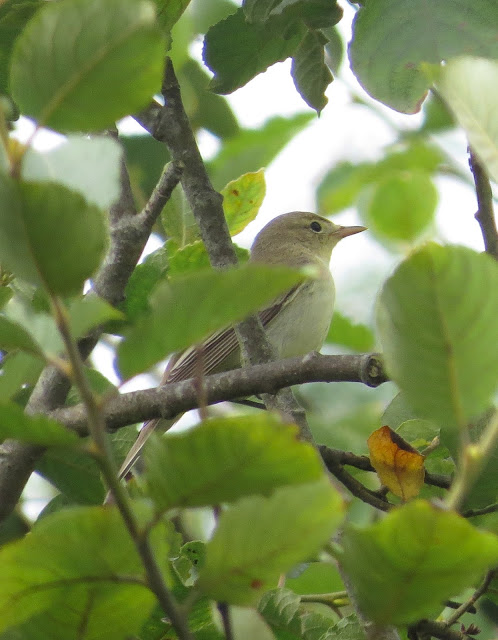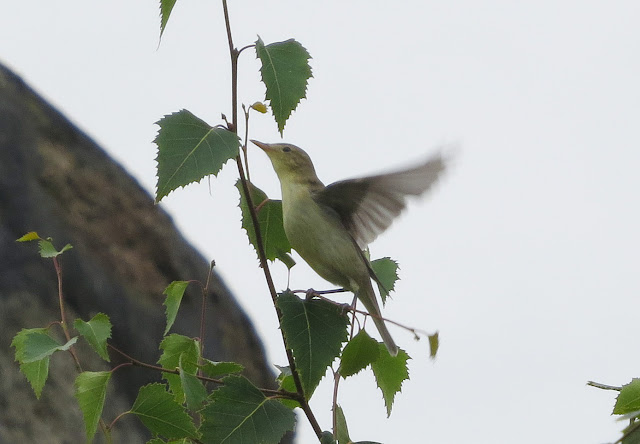Wilson’s Petrel – an elusive
and enigmatic seabird that evades the vast majority of British birders during
their lifetime, unless of course they’re prepared to make a lengthy pilgrimage
to Cornwall each summer and spend time exploring the vast seas surrounding the
beautiful Scilly Isles in search of seabird gold.
With Bob Flood, Joe Pender and
the rest of the crew on board the now famous ‘Sapphire’ having well and truly
mastered the art of tracking down these mysterious petrels, their Scilly Pelagic
boat trips have a high success rate during summer weekends, often attracting up
to 4 or 5 birds to the boat at once.
Having experienced 3 pelagics
last August, but with no luck on the Wilson’s Petrel front (it was a very late
year for them last year), this August again saw us make our way down to
Penzance ready for the Scillonian crossing the next morning. Stopping off en-route
to admire the long staying Dalmatian Pelican
that’s been spending its time loafing at Restronguet Creek and the surrounding
Cornish coastline for the past 3 months, we eventually had relatively distant
views as it lifted up its head to show the magnificent yellow bill and confirm
our suspicions as to the ID (it was asleep at first and looked like a giant
washed up buoy!).
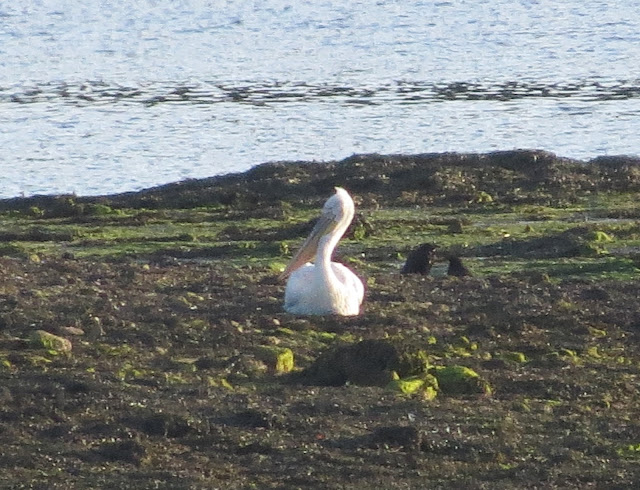 |
| The 'rancid' Pelican! |
Having been tracked from
Poland, Germany and France, only time will tell if this bird is accepted on to Category A of the British List!
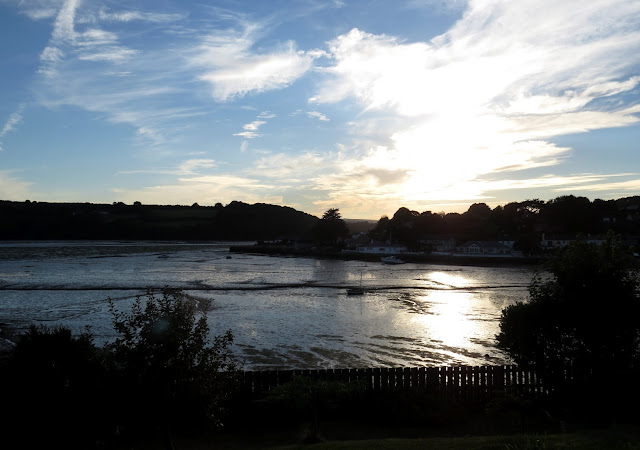 |
| Restronguet Creek |
Arriving at St Marys on Scilly the next day, we had plenty of time to
explore the island before our first of three pelagics on Monday night, taking
in the beautiful beach scenery that St Marys has to offer and soaking up the
sun. Unfortunately we didn’t find anything of note at either Lower or Higher Moors throughout our week on the island, several Snipe and a smattering of Common,
Green and Wood Sandpipers being the best we could muster.
With the moss and lichen coated trees and hidden marshy groves, it wasn’t hard to imagine the plethora of American vagrants the area has undoubtedly held in autumns gone by.
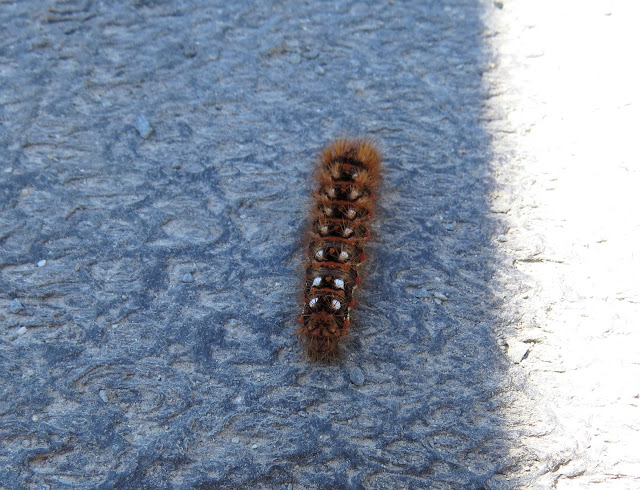 |
| A Knot Grass Moth caterpillar that we found on the boardwalk at Lower Moors |
With Monday night’s pelagic sadly not featuring any of the large
Shearwaters or our much sought after Wilson’s, we settled for point blank views
of around 40 European Storm-petrels whizzing around the boat at top speed. A
nice Long-tailed Skua that we watched approach the boat from being just a spec
in the distance to flying overhead was also a bonus, as were the two Blue
Sharks that were caught and tagged as part of the on-going research programme
in to their distribution in British waters.
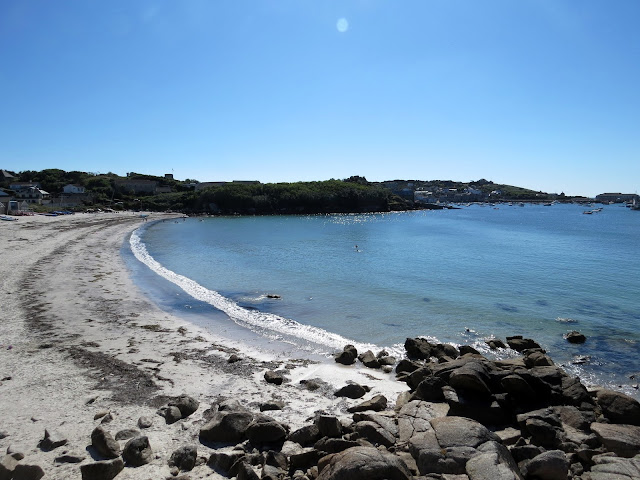 |
| The beautiful Scilly scenery |
Friday evening (and our next pelagic) soon dawned rough and stormy, a huge weather front from the west blowing in with ginormous waves forecast and winds in excess of 50mph! Certainly not ideal sailing conditions, and whilst the Scillonian had been cancelled due to the ferocious weather, in complete contrast we headed out in to the storm in pursuit of large shearwaters and petrels!
It was immediately obvious that the high westerly winds had brought in
huge numbers of Shearwaters, and it didn’t take long before we had our first
Cory’s – a lifer for me and Alex – soaring towards the boat, a second bird in
quick succession.
Having missed Cory’s Shearwater on our pelagics last year, this was a huge relief, and despite the howling gales we enjoyed incredibly close views as these remarkable seabirds expertly cut through the air with incredible power and grace.
 |
| The huge waves we experienced during the pelagic! |
With approximately 42 Cory’s seen during our 5 hours out at sea, along
with a handful of Great Shears, at times flying right over the boat, the
evening was a huge success – even more so considering I’d managed to avoid the
seasickness I’d suffered on Monday’s much calmer pelagic! Relief! With just one
more pelagic left on our 2016 trip, it was well and truly last chance saloon on
the Saturday to get our desired Wilson’s, and with the winds perfect and less
rain forecast, we were definitely in with a shout!
Saturday dawned as wet and windy as Friday evening had left us – giving
us barely any time to recover after the absolute battering (my knees and shins
were bright purple with bruises!) we’d received being tossed around the boat
the night before. Speaking to seabird expert and Wilson’s guru Bob Flood before
the boat arrived, he was confident we’d be able to get a Wilson’s to the boat –
fingers crossed he was right!
 |
| St Mary's Harbour - if only the weather had been like this for our pelagics! |
Huddling underneath 5 layers of coats, including a bright pink rain cape
(it did the job!) in an attempt to avoid the driving rain and waves that were
pouring upon us, singles of Cory’s and Great Shearwaters kept us entertained as
we headed east of St Martins. Stopping the boat to commence drifting and
chumming in an effort to draw in a Wilson’s, it was now a waiting game to see
if they would materialise.
Numerous European Storm-petrels soon began to appear, attracted to the
mixture of cod liver oil and mashed up fish pouring in to the water, the scent
clearly having travelled in the wind. With the numbers of Stormies building,
complete with several returning Bonxies, Cory’s and Great Shearwaters, the cry
soon went up that everyone on board had been waiting for – WILSON’S!!
Scrambling over to the side and struggling to stay upright as the boat
was buffeted about on the water, it transpired Alex was already on the bird,
but with the huge winds creating large channels in between waves, it was all
too easy for the tiny petrels to vanish behind a tower of water, and my target
bird disappeared behind a huge blue wall of ocean.
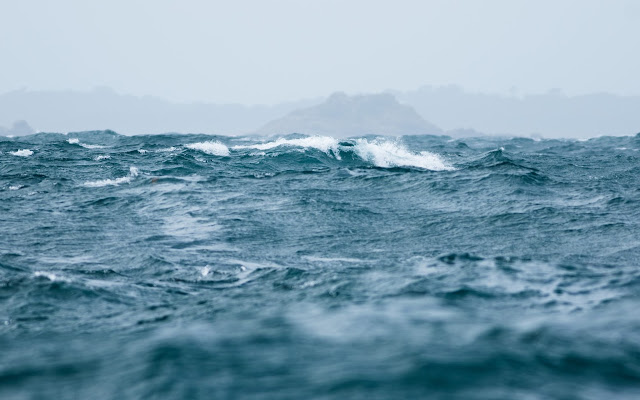 |
| The crashing waves we experienced on the boat trips - easy for small petrels to get lost behind! |
With no sign over the coming minutes, I anchored myself to the side of
the boat, ignoring the lashing wind (which actually ripped the hood off my mac
it was that fierce!) and splashing waves, putting the extreme rocking motion of
the boat and the associated seasickness out of my mind – I was now on red alert
for Wilson’s!
Luckily, after an excruciating 20 minutes when the first bird didn’t
reappear, the cry went up again – WILSON’S – it’s back!
Spinning around to face the back of the boat and squinting through the
spray, the bird I had been waiting to see for over 30 hours of Scilly pelagics
was finally in front of me, skipping over the waves almost in slow motion and
hanging delicately in the air, a calm contrast to the raging torrent of water
over which it hopped with ease – my first Wilson’s Petrel.
The magical moment lasted only a few seconds, the light pale panels on
the wings standing out against the velvety black, while the long spindly legs
trailed behind, dangling helplessly towards the water. For a brief moment, it
seemed like the wind stopped howling and the waves stopped raging as we all
locked on to this sought after scarcity in British waters, savouring the
seconds and enjoying the moment by simply watching on as the petrel danced over
the waves instead of scrambling around for a camera.
Then, in an instant it was gone, carried off by the wind and lost in the
waves, aware once again of the crescendo of noise returning as the water
crashed against the side of the boat, my mac flapping fiercely out of control
in the gales. None of this mattered - finally we had our prize!
With the conditions still ideal for seabirds, we continued to chum,
managing to attract a further two Wilson’s Petrels towards the boat, making
approximately 4 in total. Managing a few shots with my camera as one passed the
end of the boat (the majority of frames were out of focus black shapes or
crashing walls of water) due to the intense rocking of the boat, I found it
exceptionally difficult to even stand up straight, let alone hold a camera
steady to take in-focus photos of a fast moving petrel!
 |
| The characteristic yellow feet that Wilson's Petrels show |
Instead, it was better to just watch on and admire the Wilson’s
spectacle unfolding before us, our last encounter being a bird cruising slowly
past the boat at eye level, floating in the wind and giving everyone on board a
memory to last a lifetime.
With three days to spare between pelagics, having booked on to dates at either side of the week, we used the spare time to explore more of the islands, taking a day trip out to the wonderful Tresco on the Tuesday – our first Scilly island apart from St Marys. Exploring the famous Tresco Abbey Gardens revealed none of the resident Golden Pheasants that are said to live there, but the beautiful garden features and the photogenic Red Squirrels were more than enough to keep us happy.
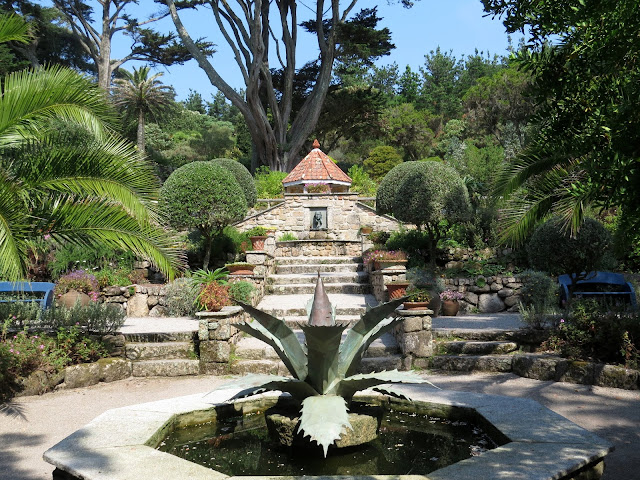 |
| The beautiful setting of Tresco Abbey Gardens |
An Icterine Warbler that had been found on the Garrison during our stay also had us taking a trip up to this high point on the island, staking out the garden next to the football pitch until this monster of a warbler reappeared in the apple tree, proceeding to flit around elusively and feed for the next half an hour or so.
Present with at least two Willow Warblers, the Icterine was noticeably larger, with a huge orange bill compared to the Willow’s shorter and daintier beaks. Having only ever seen Melodious before, even abroad, this was a great new bird for me and one I had been hoping to bump in to for a while over several east coast visits.
 |
| A handful of Pied Flycatchers were the only other migrants of note |
Having enjoyed a fantastic week on the island in perfect weather (in
terms of both exploring and for generating excellent seabird movement!), with
gorgeous scenery, excellent food and second to none hospitality at the B&B,
we both thoroughly enjoyed ourselves on these charming islands.
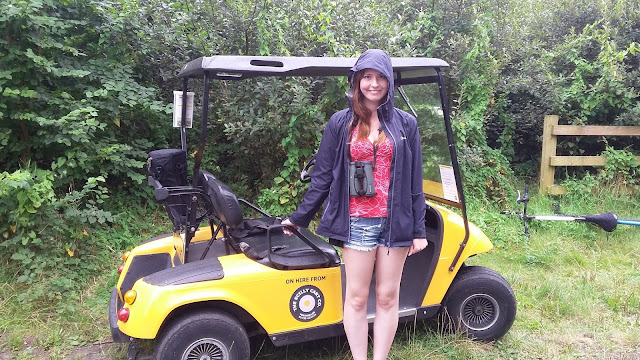 |
| The Scilly Isles carts! One of the highlights of my week! |
With our
Wilson’s Petrel finally in the bag, along with excellent views of Cory’s
Shearwaters and my first Icterine Warbler to boot, who knows when we’ll be back
on these picturesque islands in the future – fingers crossed it’s whilst
looking at a pristine male Blackburnian Warbler one autumn. We can but dream.

